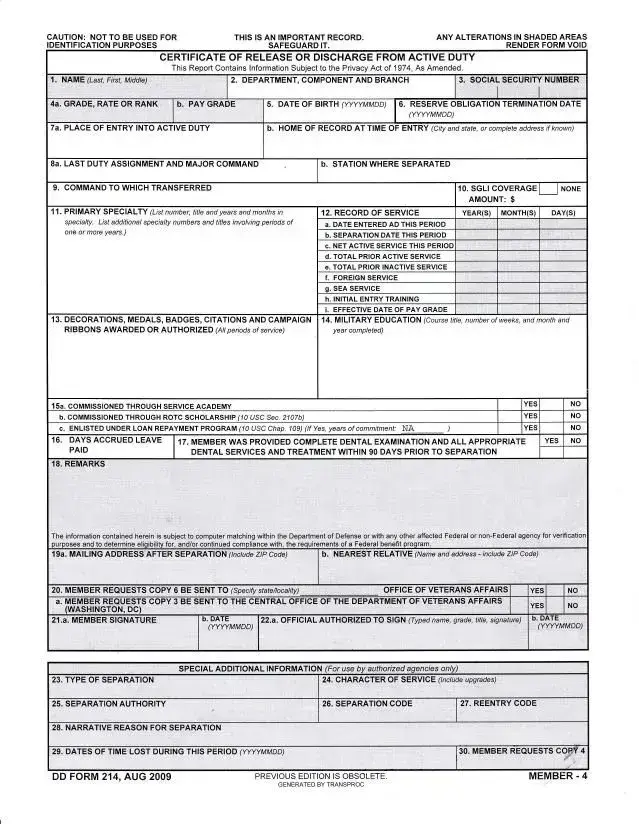What is the DD Form 214?
The DD Form 214, officially known as the Certificate of Release or Discharge from Active Duty, is a document issued by the Department of Defense. It provides important information about a service member's military service, including their dates of service, rank, and reason for separation. This form is crucial for veterans seeking benefits and services from the Department of Veterans Affairs.
Why is the DD Form 214 important?
This form serves as an official record of a service member’s military service. It is often required when applying for veterans' benefits, educational programs, and employment opportunities. The DD Form 214 verifies a veteran's service and can help in accessing healthcare, housing assistance, and other resources.
How can I obtain my DD Form 214?
Veterans can request their DD Form 214 through the National Archives or their respective service branch. Online requests can be made via the eVetRecs system. Alternatively, you can submit a Standard Form 180 (SF-180) by mail or fax. Ensure that you have all necessary information, such as your service number and dates of service, to facilitate the process.
What should I do if my DD Form 214 contains errors?
If you find any inaccuracies on your DD Form 214, it is essential to correct them. You can request a correction by submitting a DD Form 149, Application for Correction of Military Record, to the appropriate service branch. This process may take time, so it’s advisable to address any errors as soon as possible.
What are the different types of separations indicated on the DD Form 214?
The DD Form 214 outlines various types of separations, including honorable discharge, general discharge, and other-than-honorable discharge. Each type reflects the circumstances of the service member's separation and can impact eligibility for benefits. Understanding your separation type is crucial for future applications.
Can the DD Form 214 be used for identification purposes?
No, the DD Form 214 should not be used for identification purposes. It is an important record that contains sensitive information. Safeguarding this document is essential to protect your personal information and prevent identity theft.
How can I safeguard my DD Form 214?

